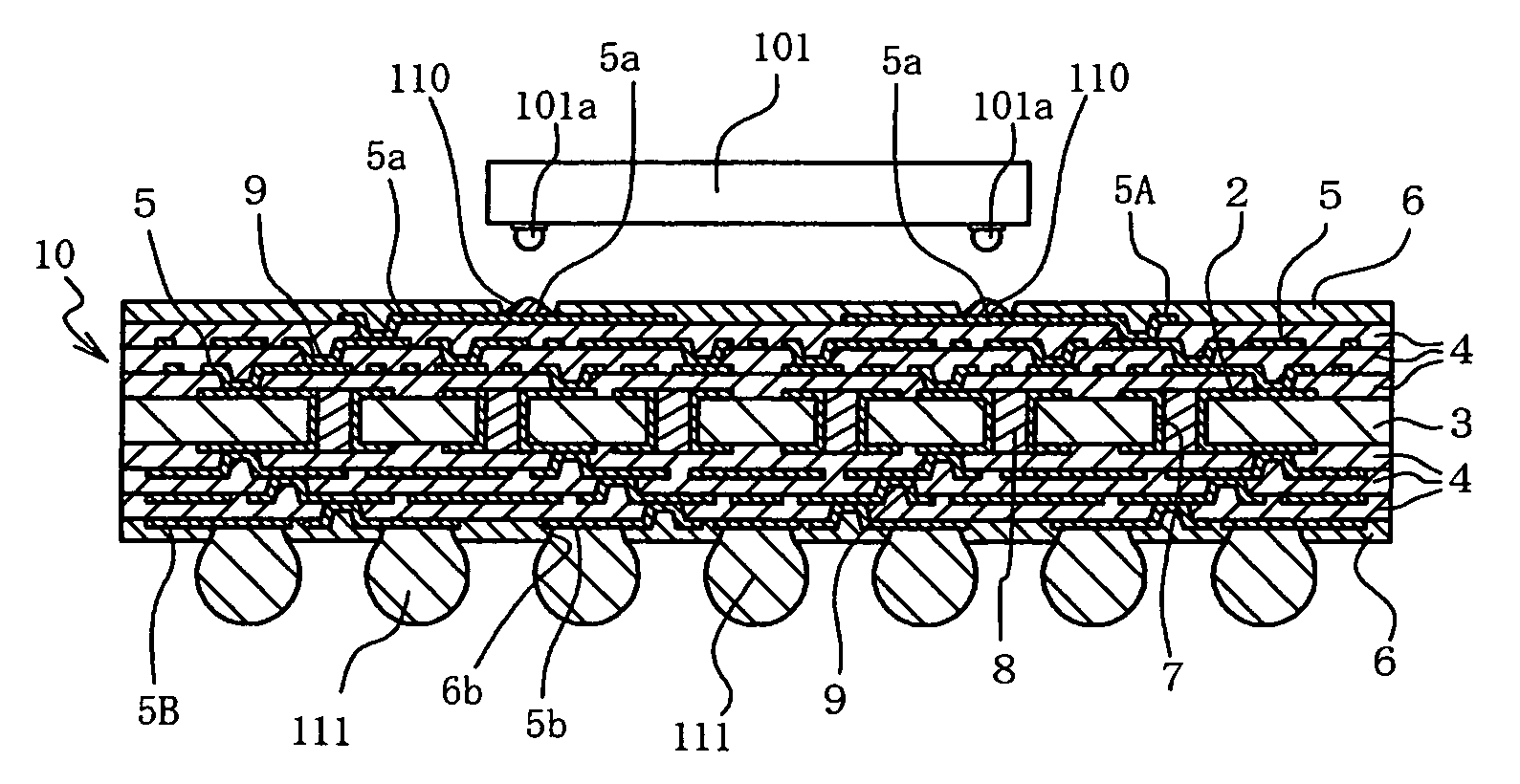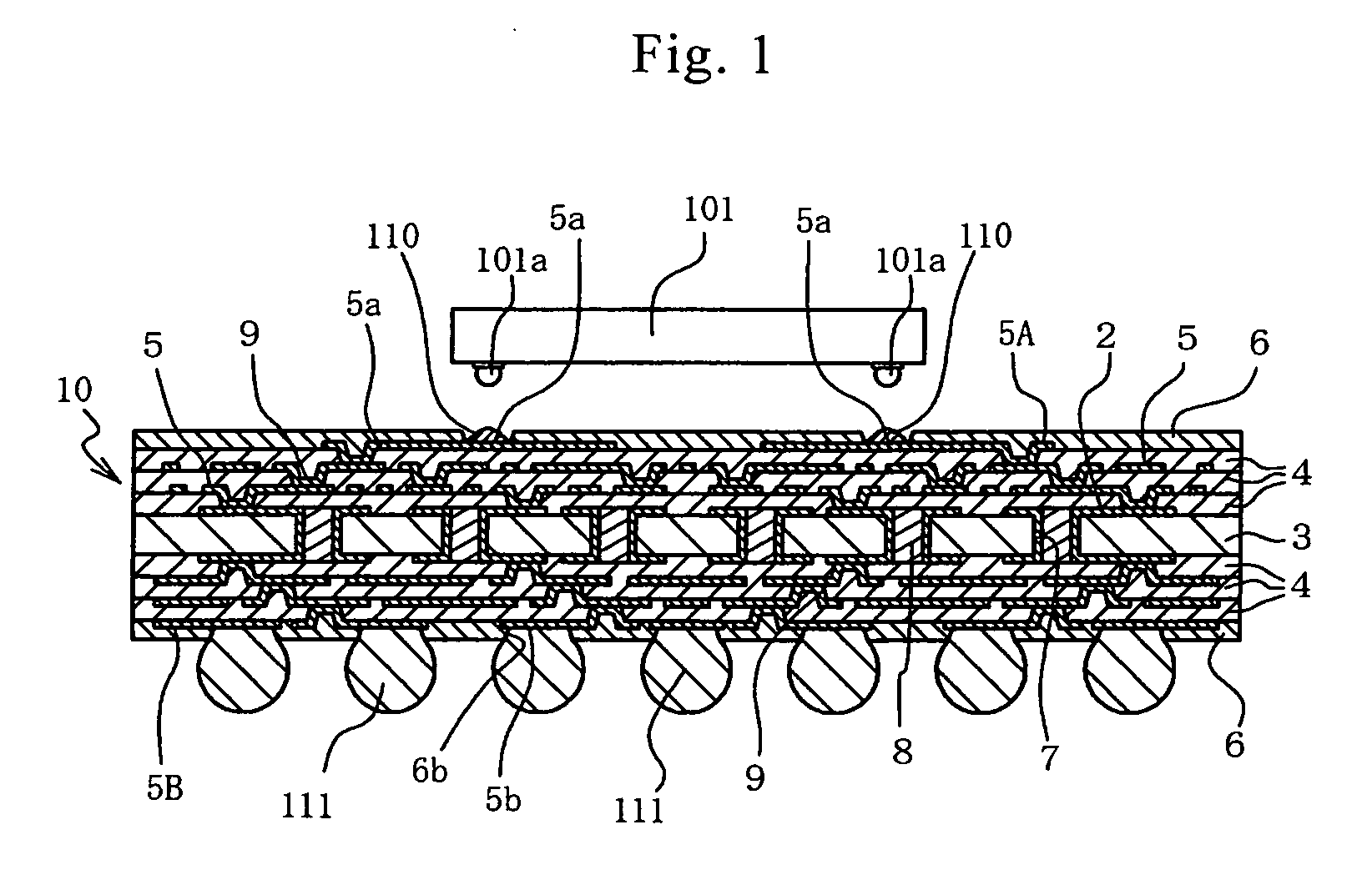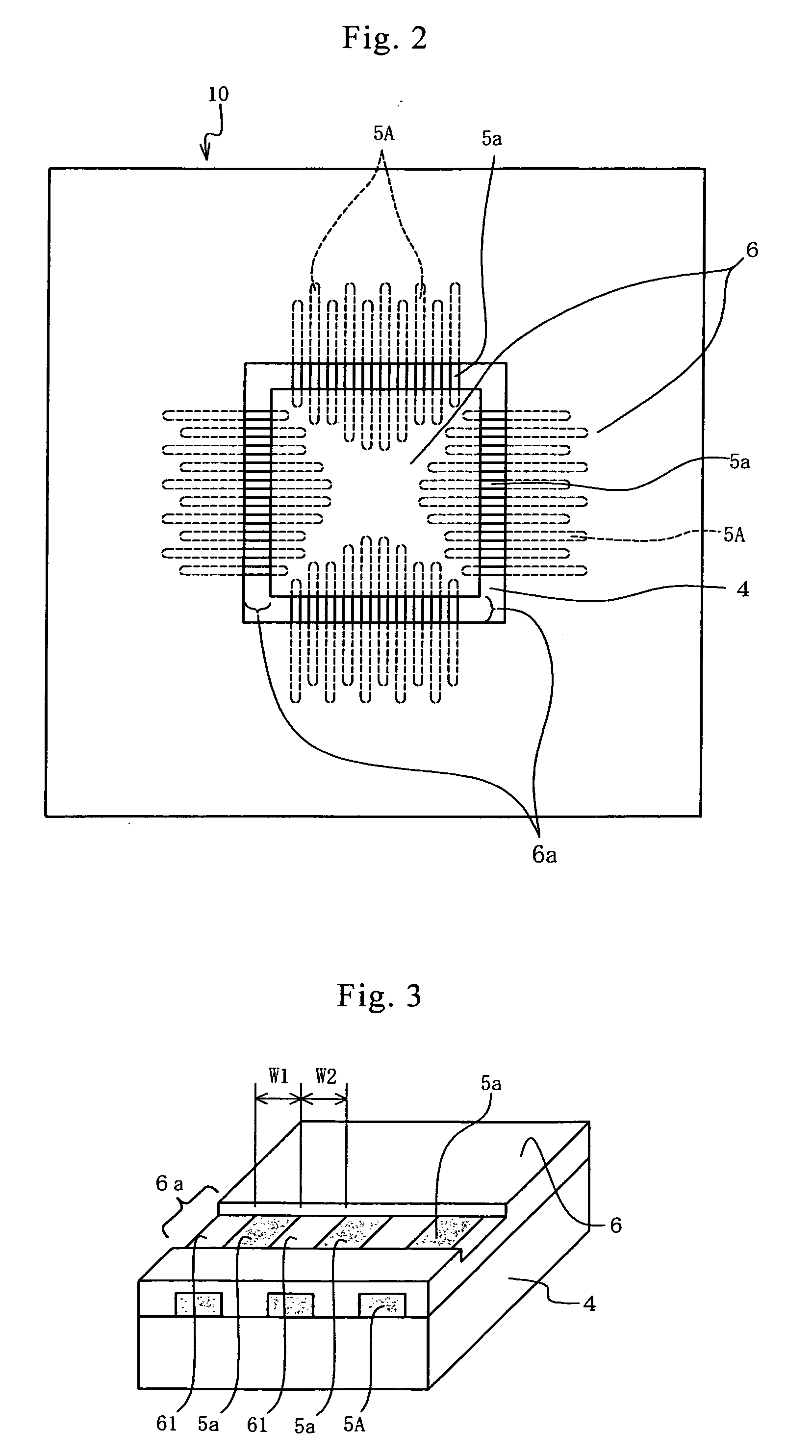[0022]One
advantage of the invention is to provide a wiring board of high-density wiring having excellent
electrical connection reliability as well as a manufacturing method thereof, which enable to properly form solder bumps on individual connection pads for connecting semiconductor elements, without causing any electrical
short circuit due to the solder between the adjacent connection pads, thus enabling to surely electrically connect the narrow-
pitch electrode terminals of semiconductor integrated circuit elements and the corresponding connection pads.
[0023]The intensive research of the present inventor has led to the present invention based on the following new finding. That is, a solder
resist layer is deposited so as to fill up the space between the adjacent connection pads exposed within the slit-shaped openings of the solder resist layer, so that the solder is adhered onto these connection pads. The solder is then melted by heating. At this time, the solder is rejected by the surface of the solder resist layer, thereby enabling solder bumps to be properly formed on the individual connection pads, without causing any electrical short circuit due to the solder between the adjacent connection pads for connecting semiconductor elements. This achieves the wiring board of high-density wiring having excellent
electrical connection reliability, which is capable of surely electrically connecting the narrow-
pitch electrode terminals of semiconductor integrated circuit elements and the corresponding connection pads.
[0024]Specifically, the wiring board of the invention includes alternately laminated insulation
layers and wiring conductors, a plurality of strip-shaped wiring conductors for connecting semiconductor elements, arranged side by side on the outermost
insulation layer, each wiring conductor partly having a connection pad to which the electrode terminals of the semiconductor elements are connected by flip-chip bonding; and a solder resist layer deposited over the outermost insulation layer and the strip-shaped wiring conductors so as to have slit-shaped openings for exposing the upper surfaces of the connection pads. The solder resist layer fills up the space between the connection pads adjacent to each other and exposed within the slit-shaped openings.
[0025]One method of manufacturing a wiring board of the invention includes the steps of: alternately laminating insulation
layers and wiring conductors; arranging side by side, on the outermost insulation layer, a plurality of strip-shaped wiring conductors for connecting semiconductor elements, each wiring conductor partly having a connection pad to which the electrode terminals of the semiconductor elements are connected by flip-chip bonding; depositing a solder resist layer over the entire upper surfaces of the outermost insulation layer and the strip-shaped wiring conductors; and removing the solder resist layer extending over the connection pads and between the adjacent connection pads so that the upper surfaces of the connection pads are exposed and the solder resist layer remains between the connection pads.
[0026]Other method of manufacturing a wiring board of the invention includes the steps of: alternately laminating insulation layers and wiring conductors; arranging side by side, on the outermost insulation layer, a plurality of strip-shaped wiring conductors for connecting semiconductor elements, each wiring conductor partly having a connection pad to which the electrode terminals of the semiconductor elements are connected by flip-chip bonding; depositing a first solder resist layer over the entire upper surfaces of the outermost insulation layer and the strip-shaped wiring conductors; removing the first solder resist layer so that the upper surfaces of the strip-shaped wiring conductors are exposed and the first solder resist layer remains between the adjacent connection pads; and depositing, over the upper surfaces of the first solder resist layer and the strip-shaped wiring boards, a second solder resist layer having slit-shaped openings for exposing the connection pads and the first solder resist layer extending between the adjacent connection pads.
[0027]In accordance with the invention, the solder resist layer is deposited so as to fill up the space between the adjacent connection pads exposed within the slit-shaped openings of the solder resist layer. The wettability on the connection pads is higher than the wettability on the solder resist layer. Therefore, when the solder is adhered onto the connection pads and then melted by heating, even if the melted solder is spread over the space between the adjacent connection pads, the melted solder is rejected by the surface of the solder resist layer, and the solder bumps are formed on the connection pads. This produces the effect of providing the wiring board of high-density wiring having excellent
electrical connection reliability which enables to properly form the solder bumps on the individual connection pads for connecting semiconductor elements, without causing any electrical short circuit due to the solder between the adjacent connection pads, thereby ensuring the electrical connection between the narrow-pitch electrode terminals of the semiconductor integrated circuit elements and the corresponding connection pads.
 Login to View More
Login to View More 


